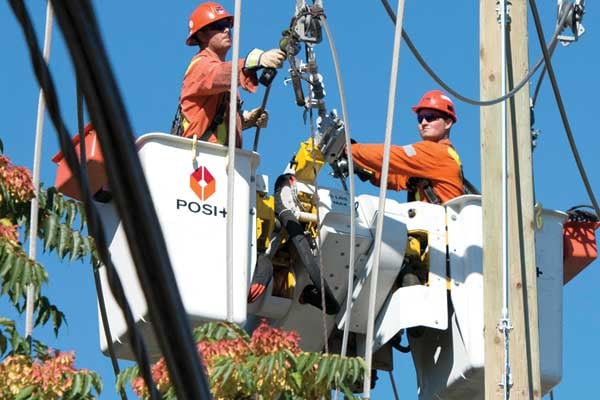Company wins gold in utilities and electrical category of Canada's Safest Employers awards

The first item on the agenda for every new employee at Kitchener-Wilmot Hydro is meeting their department heads; the second is talking about safety.
“Right in the door, they’re being indoctrinated into our safety culture,” says George Minow, manager of health, safety and wellness.
The Kitchener, Ont.-based utility provides electricity to more than 93,000 houses and businesses across a service area of 404 square kilometres and has a staff of about 190.
Whatever job a new hire is going to be doing at the utility company, they will go through an extensive orientation program. Safety orientation combines in-person and online training, with a large emphasis on learning rules and procedures. Power-line technicians, whose safety orientation is one week long, spend a day and a half with the safety department learning about the safety culture, expectations, the risks of their jobs and how these risks will be controlled. New office workers spend two to three days engaged in safety orientation.
WATCH THE EXCLUSIVE VIDEO HERE
The utility’s daily job planning program, based on the concept of serious injury and fatality prevention, is considered a model by Ontario’s Infrastructure Health and Safety Association. Following this program, everyone begins the workday by reviewing the jobs for the day, step by step, and identifying hazards and barriers. Barriers, or controls, are graded according to effectiveness, with the goal being to have at least one top-level barrier or several barriers. Each person is then assigned tasks and must sign a form saying they understand their role for the day.
“The job-planning process is the first line of defence with regard to our plan to do work safely every day. We need every day to make an effective plan of how we’re going to prevent injuries and fatalities. Each person is involved in job planning; it’s the process of engaging your mind in what you’re doing today,” Minow says.
The safety team, with input from field workers, engineers and the joint health and safety committee, regularly reviews and updates the job-planning process. Right now, it’s in the trial phase of a method that aims to help workers focus on the most important elements of the process by “de-cluttering” it; for example, eliminating some forms and reference materials.
An integral part of the company’s ergonomics program is the ergonomic wellness team. Created in 2005 to draw attention to musculoskeletal disorders, the team meets bi-monthly and works proactively on ergonomic solutions. It is made up of more than 10 per cent of the company. With turnover, Minow estimates more than 20 per cent of current employees have served on the ergonomic wellness team.
“It is the envy of many utilities for the field staff representation we have, the work we do and our success, which is due to our members and support from senior management,” he says.
Ergonomics is even part of the orientation program. Every new hire is given a handbook on ergonomics and learns about risk factors and how to report issues. Each new person also completes a Back and Lifting Safety online course. Since the ergonomic wellness team’s inception, soft tissue injuries have gone down by 66 per cent.
Senior managers are very involved in OHS. Health, safety and wellness initiatives are included in management’s annual goals, including those of the president and CEO. Senior managers attend and make presentations at safety meetings, participate in work observations and participate in the joint health and safety committee.
The safety team conducts a staff survey at least annually to determine safety culture and progress. It also completes external audits every five years and internal audit programs regularly.
“Safety is our first core value. It is when we talk to our supervisors — all of them want their staff to go home safe,” Minow says. “They put in the effort because none of them want to be in a position where that doesn’t happen.”





